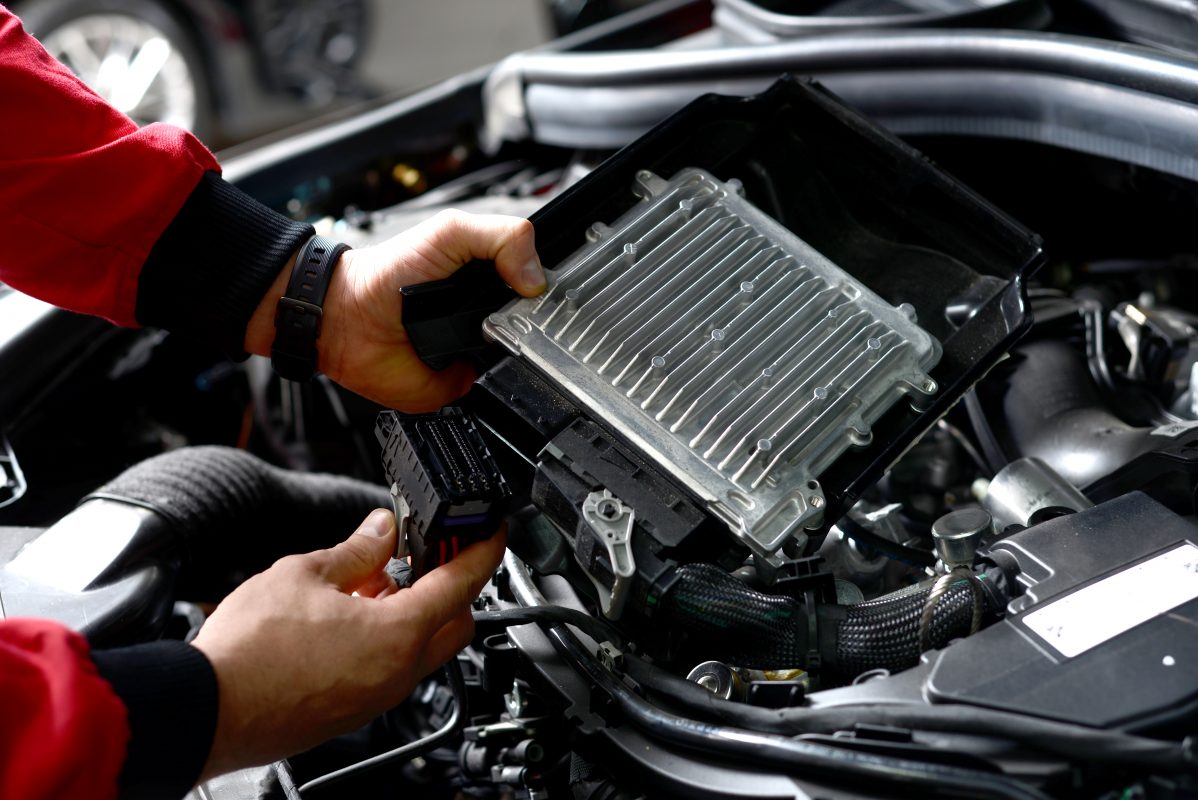Chip-tuning or Engine Remapping
Chip-tuning or chiptuning (literally “modification of the electronic chip”) is the technique that allows the electronic performance of an internal combustion engine to be increased.
On most modern cars or motorcycles the engines are managed by an Electronic Control Unit (ECU). The ECU continuously monitors the amount of fuel injected, the turbo pressure, and the ignition times. Thanks to chiptuning it is possible to optimize a certain number of parameters which define the engine management system.
Ignition setting
In order to extract as much energy as possible from each liter of fuel, the timing of ignition must be constantly changed depending on the number of engine revolutions, engine load, temperature and other parameters especially. The regulator continuously calculates and changes the ignition time.
Fuel injection
According to the sensor signals which measure the quantity (of oxygen) of air sucked in, the number of revolutions of the engine and the load of the engine (position of the acceleration control) and some correction parameters, the electronic system determines the most suitable time and duration of injection.
Oxygen setting
The oxygen sensor measures the amount of oxygen remaining in the exhaust gas. Depending on the values measured, a certain amount of fuel is injected into the amount of air (amount of oxygen) drawn in by the engine. The quantity of fuel injected is determined in such a way that the quantity of oxygen remaining in the exhaust gases is sufficient to allow the oxidation of non-combustible elements in the catalyst and the reduction (extraction of oxygen) of the oxides nitrogen present in the exhaust gas.
Nitrogen oxides are generated by combustion pressures and high temperatures due to the oxidation of about 20% of the nitrogen normally present in the surrounding air.
Charging pressure adjustment
On turbo or other turbocharged engines, the regulator usually regulates the loading pressure. An intake air pressure sensor and a pressure regulator (actuator) are usually installed at the engine.
Exhaust gas recirculation
To reduce the amount of nitrogen oxides in the exhaust gas, a small amount of exhaust gas is redirected to the engine and mixed with the intake air. This slows down the combustion of the air / fuel mixture and reduces the combustion temperatures and pressures. This reduces the amount of nitrogen (N2) converted to nitrogen oxides (NOx).
Safety and comfort settings
The regulator also monitors the plausibility (plausibility) of the measurements indicated by the sensors. On electrical driving control systems (no throttle cable but a potentiometer located under the accelerator pedal), it is obviously very important that a breakdown does not cause the engine to run out of steam.
This is why this engine management system also detects braking or coupling signals. The injection quantity is then adjusted again according to the number of revolutions of the engine.
Operation of the engine management system
The engine management system consists of a box including one or more printed circuits on which many electronic components are soldered. Some of these components are processors which include a program (chip-tuning software). There is a program for all functions regulated by the engine control device.
According to the above parameters (measured values), the electronic system controls an actuator (a control unit) through the program. These programs generally regulate the quantity of fuel injected, the number of revolutions at a standstill, the turbo pressure and the timing of ignition, for example. All of these settings are defined at the level of ignition patterns (in three dimensions).
Fuel saving
After optimizing the software (chip-tuning), the fuel consumption of a turbo Diesel engine, for example, can be reduced by 9% for a similar driving style. The engine efficiency is improved by optimizing the ignition pattern and the setting of the loading pressure. These parameters have a positive effect on fuel consumption, which makes driving more economical.
Why manage the engine?
The engine management system must continuously regulate the timing of ignition, the amount of fuel injected and the timing of injection. On some vehicles engine, even the timing of the camshaft is regulated electronically, thanks to BMW’s Vanos system or Honda’s V-tec. In order to allow all this, modern motors include numerous sensors and actuators. These measure the amount of air drawn in by the engine. The temperature of the coolant, the outside temperature, the position of the accelerator pedal, the driving speed, the number of revolutions and the amount of oxygen remaining in the exhaust gases generally determine acceleration and performance. .



